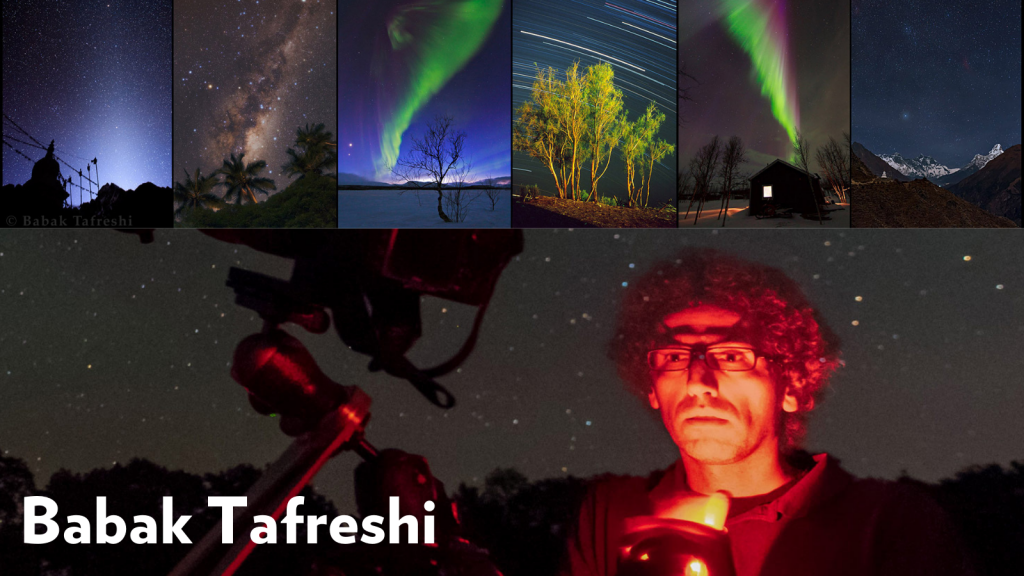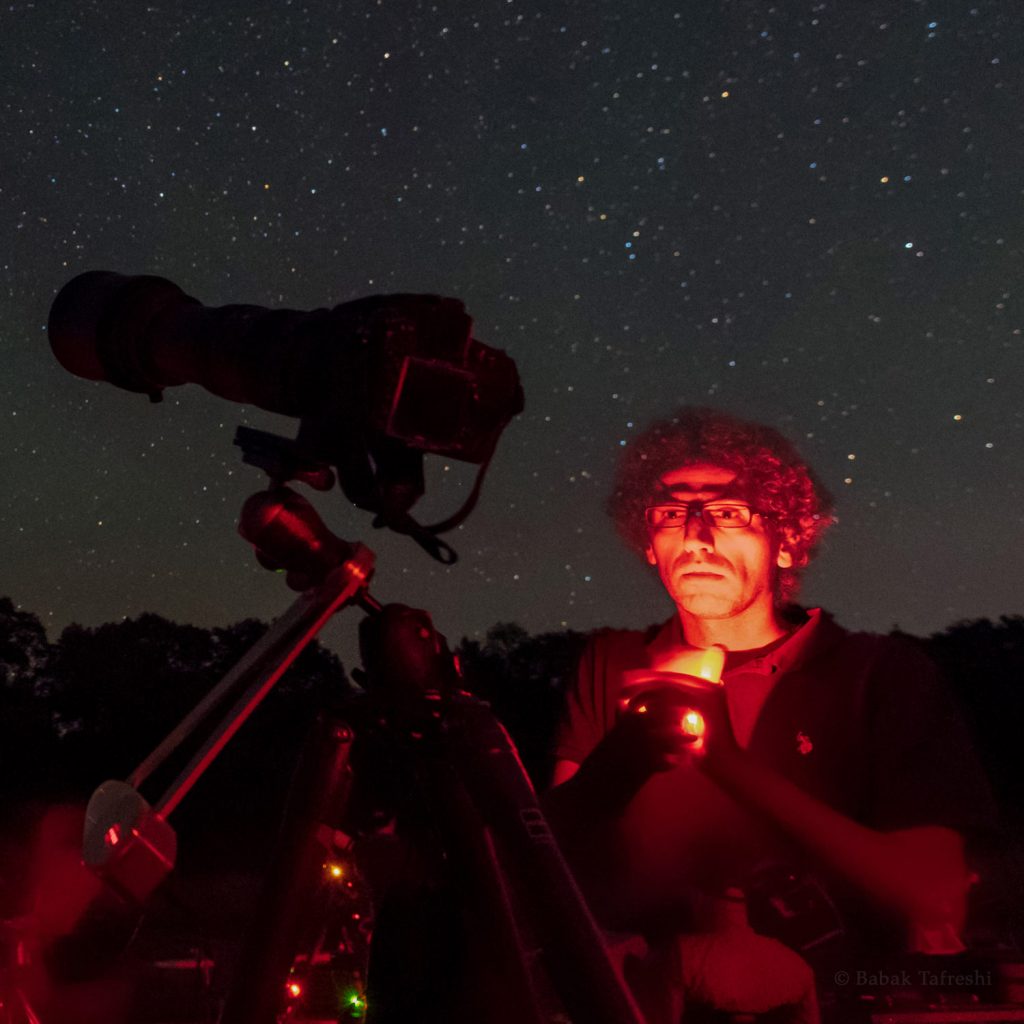#IAClimate: National Geographic Photojournalist Babak Tafreshi

for Earth Day 2021
In celebration of the 51st Earth Day, PAAIA chatted with some of the brightest Iranian Americans working on the environment to learn more about their work and the importance of joining in the fight against climate change.
We are delighted to share our interview with Babak Tafreshi, photojournalist with National Geographic and Founder of The World at Night, a project which captures the Earth’s beauty at night. Babak was born in Tehran and lived in Iran until 2011. He has been photographing the night sky since the early 1990s, when he was in high school. Babak’s journey as a journalist has taken him across all seven continents, to capture a wide range of beautiful geographies, including Antarctica, Persepolis, the Sierra Nevada Mountains, the Pyrenees Mountains, Mt. Kilimanjaro, and more.
This interview has been edited lightly for clarity and conciseness. Babak can be found online on his website, babaktafreshi.com, or his Instagram, @BabakTafreshi.
PAAIA: How long have you been photographing nature, and what got you interested in it?
Babak Tafreshi: I have been taking photographs since my early teenage years. Nature plays an important role in my life. I grew up in Iran and its natural wonders and diverse scenery had a profound impact on my photography. I spent more than 15 years traveling throughout Iran’s rugged mountain ranges, forests, grasslands, waterfalls, beautiful plains, salt flats, and deserts.
I was aware of ancient Persian scholars and astronomers who named some of the brightest stars in the night sky: Aldebaran, Antares, Fomalhaut, and Regulus. My first close-up view of the moon came at age 13 when I borrowed my neighbor’s telescope and gazed at the moon atop the roof of my family’s apartment in Tehran. That moment ignited my passion for astronomy and the night sky.
I wanted to be an astronomer or planetary scientist at that time. My first images were through a telescope with a simple camera set up. I soon realized my real passion was not for telescopic photography, but for the night environment itself, and the combination of night sky and landscape.

PAAIA: Do you have any fond memories of your time in Iran?
BT: I was born in Iran and lived there for thirty years and I have traveled to every corner of the country for photography or educational programs, and I still visit Iran every few years for lectures and workshops. Since teenage-hood, I always had global ideas in mind, trying to break the boundaries created by the system, trying to connect to the rest of the world. That motivation led me to become a traveler at an early age and made me passionate to connect to the night sky, what I consider to be “a bridge to the universe”.
I began to travel around Iran as a teenager with a small group of friends, including my colleague, Oshin Zakarian, a photographer now based in Los Angeles. We searched for places with dark skies where we could use our telescopes and cameras to explore the night sky. Our group journeyed to remote villages, mountains, deserts, remains of ancient cities and historical monuments. These trips inspired my interest in archeology, thanks to another close friend of mine Shahrokh Razmjou (currently, University of Tehran archeology professor). This new passion soon merged with my interest for astronomy and the night sky. An essential part of our trips transformed into exploration of cultural and nature sites far from city lights. For several years I also wrote for travel magazines in Iran, sharing stories of a young explorer who visits less known archeological sites.
I have many memories and favorite places: Alborz and Zagros Mountains, Mt. Damavand, Kavir National Park, Shiraz and Persepolis, the old Caravansaries on the ancient Silk Road, the unique villages of Alamut Valley, and more.
PAAIA: You have a huge following on Instagram, and your World at Night series is simply stunning. What fascinates you about the Earth, sky, and universe at night?
BT: I joined Instagram about five years ago, after a meeting at the annual National Geographic seminars in DC. At the time I was much against spending time on any new social media. The ideas shared by some of my NatGeo colleagues that day revealed to me the growing potentials of this platform for visual storytelling and nature conservation. I tried to combine my background of science journalism and astronomy with the art and joy of night sky photography in the posts and I strived to rebuild the broken bridge between our modern society and the natural world using the beauty of the night sky. From stories that connect art and science, Earth & sky, to those that reveal the many values of preserving the natural night-time environment of our planet, against light pollution.
Some of the images were fresh from the camera, and some stories were from the earlier years in Iran when I found this passion in the 1990s, and when The World at Night project formed in the 2000s. I sincerely appreciate all the feedback and support I have received. It is a great pleasure to discover the people and organizations that follow me. My images try to highlight the beauty of a natural night sky that most modern people have lost, or have never seen. These perspectives are also featured in my recent book The World at Night. This work is a compilation of photographs by all TWAN colleagues (twanight.org), some of the best night sky photographers in the world.
“Boundaries vanish when we look skyward!” – This was the initial idea that led me to co-found the TWAN program in 2007, still operating today. We are a volunteer effort and rely on contributions of our photographers, coordinators, and individual supporters. We strive to reveal, share, preserve, and create public interest in the value of natural night skies.
It is easy to fall in love with the night sky. It is an important part of our humanity, which I believe to be a crucial element for life. I have spent more than a thousand nights capturing images under the stars on all seven continents. Taking photographs of the hidden universe in our night sky offers an experience that goes far beyond any technical or artistic enjoyment of photography. The night sky is an essential element of our nature, a heritage to preserve for all things on this planet. If we lose our natural dark night skies we lose the best connection to our origin and future.

PAAIA: Why do you believe conserving the environment and protecting the Earth’s natural beauty is so important?
BT: We, as a technologically advanced civilization, must advance our culture and behavior. These two are currently not on the same train, with little investments in culture and educational growth compared to technology. An advanced civilization would act more like a gardener instead of being only a user. Our future depends on how much we learn to be the gardener of the Earth and all its species. The foundation of a healthy environment depends on the well-being of all people, plants and animal species.
We are quickly losing the limited resources on our “pale blue dot”, the term used by astronomer Carl Sagan for a simple, though striking, image of the Solar System from the Voyager 1 space probe in 1990, from about 6 billion kilometers away from us, showing Earth as a tiny dot in the vast cosmic ocean. Today many species are in decline, seasonal plant life cycles are out of sync; bees, birds, bats, fish, sea turtles and mammals are under threat. Until we change our habits and our throw-away lifestyle, environmental imbalance and a steady decline in the quality of our lives and health will continue.
PAAIA: What message do you have to the Iranian American community this Earth Day?
BT: I am very focused on preserving the remaining natural night skies on our planet. Under a perfectly dark, clear sky, about 4500 stars are visible to unaided eyes. Today, most city skies are virtually empty of stars. There is a new generation that has never seen the Milky Way, and more than 80% of North Americans live in areas where the Milky Way is no longer visible in the night sky. It’s not only about the beauty of the sky that we are losing – light pollution has far more concerning effects. We know that light pollution disturbs many species including vital insects, billions of birds, nocturnal species, and the human body as well. The worst offenders of light pollution are glaringly bright, inexpensive white/blue LED lights, often left on all night long without any logical reason. The long term health effect of night exposure to intensely bright white/blue LEDs is a serious matter. Exposure to this type of lighting can reduce sleep times, disrupt human circadian rhythms and melatonin levels, impair daytime functioning and cause major health problems in the human body. It also increases stress by keeping our brain alarmed.
The good news is that light pollution, unlike other forms of pollution, is reversible and each one of us can make a difference. I would encourage everyone to join one of my partner organizations, International Dark Sky Association, wholly dedicated to the protection of our night skies for present and future generations.
—-
PAAIA is so thankful to Babak Tafreshi for taking the time to speak with us for Earth Day. We encourage all of the PAAIA community to follow Babak’s work either online on his website, babaktafreshi.com, or his Instagram, @BabakTafreshi. Happy Earth Day!
